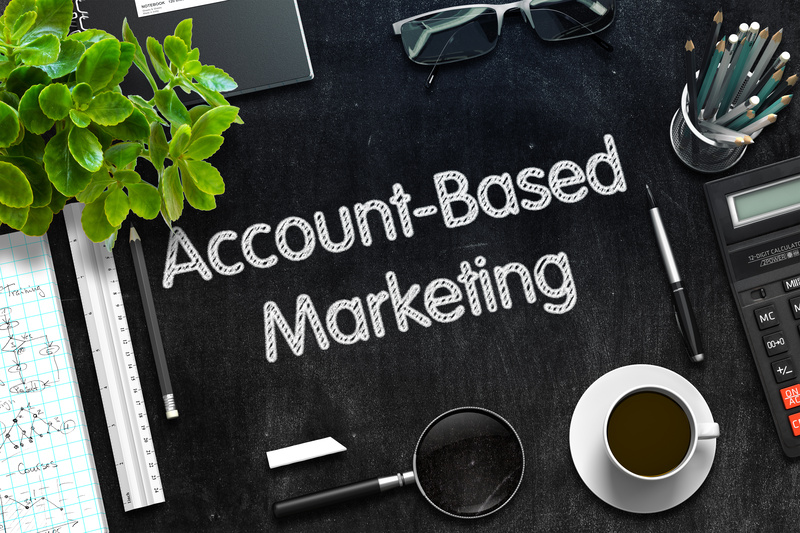In the competitive world of B2B marketing, Account-Based Marketing (ABM) is a powerful strategy that helps businesses achieve higher win rates, larger deal sizes, and accelerated growth.
This comprehensive guide will explore the essentials of ABM marketing, including strategies, platforms, and tactics, to help you set up and execute successful ABM campaigns.
What is Account-Based Marketing?
Account-Based Marketing, or ABM, is a strategic approach that focuses marketing efforts on specific high-value accounts rather than casting a wide net. Unlike traditional B2B marketing, which targets a broad audience, ABM aims to engage and convert specific accounts with personalized campaigns, ensuring that marketing resources are used efficiently and effectively.
Traditional B2B marketing and ABM differ significantly in their approach and execution. While traditional marketing relies on broad campaigns to attract potential leads, ABM focuses on identifying and targeting specific accounts that are most likely to become high-value customers. This targeted approach allows for more personalized and impactful marketing efforts, resulting in better engagement and conversion rates.
How to Set Up an Effective ABM Strategy
Setting up an effective Account-Based Marketing (ABM) strategy involves a series of deliberate and focused steps. By following these steps, you can ensure that your marketing efforts are aligned with your business goals and that you are targeting the right accounts with the right messages. Here’s a detailed guide to help you establish a robust ABM strategy:
1. Define Your Ideal Customer Profile (ICP)
The foundation of a successful ABM strategy is a clear understanding of your Ideal Customer Profile (ICP). Your ICP should describe the characteristics of the accounts that would benefit the most from your products or services.
Identify Key Attributes:
- Consider firmographic data such as industry, company size, location, and annual revenue.
- Look at technographic data, including the technologies and tools the companies use.
- Analyze behavioral data like buying patterns and engagement levels.
Leverage Historical Data:
- Examine your best customers and identify common traits.
- Use this information to refine your ICP and ensure it aligns with your business goals.
Involve Sales and Marketing Teams:
- Collaborate with both teams to ensure that everyone has a shared understanding of the ICP.
- Use their insights to refine the profile further.
2. Build a Target Account List
Once you have defined your ICP, the next step is to create a list of target accounts that fit this profile.
Research and Identify Accounts:
- Use tools like LinkedIn, Leadfeeder, and other databases to find companies that match your ICP.
- Collaborate with your sales team to identify strategic accounts they are interested in pursuing.
Prioritize Accounts:
- Segment the accounts into tiers based on their potential value and likelihood of conversion.
- Focus your efforts on high-priority accounts to maximize your resources and impact.
3. Identify Key Decision Makers
Within each target account, there are multiple stakeholders who influence purchasing decisions. Identifying and engaging these key decision makers is crucial for ABM success.
Map Out the Organization:
- Use tools like LinkedIn Sales Navigator to identify key contacts within each account.
- Look for decision makers in relevant departments such as marketing, sales, finance, and IT.
Categorize Decision Makers:
- Differentiate between decision makers (e.g., C-level executives) and decision influencers (e.g., managers, team leads).
- Tailor your messaging to address the specific concerns and interests of each role.
4. Develop Personalized Content
Personalization is at the heart of ABM. Creating tailored content that speaks directly to the needs and pain points of your target accounts can significantly enhance engagement and conversion rates.
Create Account-Specific Content:
- Develop case studies, white papers, and articles that address the specific challenges faced by your target accounts.
- Use testimonials from similar companies to build credibility and trust.
Utilize Multiple Content Formats:
- Produce a variety of content types, including videos, infographics, and webinars, to appeal to different preferences.
- Ensure that your content is easily accessible and shareable.
5. Engage Through Multiple Channels
Effective ABM requires a multi-channel approach to reach and engage your target accounts where they are most active.
Email Campaigns:
- Send personalized emails to key decision makers, highlighting how your solution addresses their specific needs.
- Use marketing automation tools to track engagement and follow up appropriately.
Social Media:
- Engage with your target accounts on platforms like LinkedIn and Twitter.
- Share relevant content, participate in discussions, and build relationships with key stakeholders.
Direct Mail:
- Consider sending personalized packages or handwritten notes to high-priority accounts.
- This tangible approach can help you stand out in a digital world.
6. Leverage ABM Platforms
ABM platforms can streamline and enhance your ABM efforts by providing advanced targeting, engagement, and analytics capabilities.
- Choose the Right Platform
- Integrate with Existing Tools
7. Measure and Optimize
Regularly measuring and optimizing your ABM strategy is crucial for continuous improvement and long-term success.
Track Key Metrics:
- Monitor engagement metrics such as email open rates, click-through rates, and social media interactions.
- Measure account-level metrics like pipeline growth, deal velocity, and win rates.
Gather Feedback:
- Collect feedback from your sales team on the effectiveness of your ABM campaigns.
- Use this feedback to refine your targeting, messaging, and tactics.
Iterate and Improve:
- Analyze the data to identify areas for improvement.
- Continuously refine your ABM strategy based on insights and results.
Top ABM Platforms to Consider
Selecting the right Account-Based Marketing (ABM) platform can significantly enhance your ABM strategy by providing advanced targeting, engagement, and analytics capabilities. Here are some of the top ABM platforms to consider:
1. Terminus
Terminus is a leading ABM platform known for its robust account targeting and multi-channel engagement capabilities. It offers comprehensive solutions for account identification, engagement, and measurement, making it a favorite among B2B marketers.
Features:
- Advanced account segmentation and targeting.
- Multi-channel engagement, including email, ads, and social media.
- Detailed analytics and reporting.
2. Engagio
Engagio is another powerful ABM platform that focuses on account-based analytics and orchestration. It helps businesses create and manage personalized marketing campaigns across multiple channels.
Features:
- Account-centric analytics and insights.
- Integration with CRM and marketing automation tools.
- Campaign orchestration and personalization.
3. Demandbase
Demandbase offers a comprehensive ABM solution that combines account identification, engagement, and analytics. It is known for its AI-driven insights and personalized marketing capabilities.
Features:
- AI-driven account identification and targeting.
- Personalized content and advertising.
- Comprehensive analytics and performance tracking.
4. HubSpot
HubSpot is a well-known marketing platform that offers robust ABM capabilities. It provides tools for account targeting, personalized content, and detailed analytics, all within an easy-to-use interface.
Features:
- Seamless integration with CRM and other marketing tools.
- Personalized content and campaign management.
- In-depth analytics and reporting.
5. 6sense
6sense leverages AI and big data to provide deep insights into account behavior and intent. It helps businesses prioritize and engage the most valuable accounts effectively.
Features:
- Predictive analytics and intent data.
- Multi-channel engagement.
- Account prioritization and scoring.
6. RollWorks
RollWorks provides a comprehensive ABM solution that includes account targeting, engagement, and measurement. It integrates seamlessly with CRM and marketing automation platforms, making it easy to incorporate into existing workflows.
Features:
- Account targeting and segmentation.
- Multi-channel campaign execution.
- Detailed analytics and performance tracking.
7. Triblio
Triblio offers a unified platform for account-based advertising, web personalization, and sales engagement. It helps businesses create and manage personalized ABM campaigns that drive results.
Features:
- Account-based advertising and retargeting.
- Web personalization.
- Sales engagement and orchestration.
Effective Account-Based Marketing Tactics
Implementing the right tactics is essential for ABM success. Here are some proven tactics to enhance your ABM campaigns:
1. Personalized Outreach:
- Craft personalized messages that resonate with your target accounts' specific needs and challenges.
2. Content Syndication:
- Distribute targeted content across various platforms to increase visibility and engagement.
3. Account-Based Advertising:
- Use targeted ads to reach decision makers within your target accounts on platforms like LinkedIn.
4. Event Marketing:
- Host or participate in events that your target accounts are likely to attend, providing opportunities for direct engagement.
5. Intent Data Utilization:
- Leverage intent data to identify accounts that are actively researching solutions similar to yours, allowing for timely and relevant outreach.
Conclusion
Account-based marketing is a powerful strategy for driving business growth by focusing on high-value accounts with personalized marketing efforts. By defining your ideal customer profile, building a targeted account list, developing personalized content, and leveraging top ABM platforms, you can create impactful ABM campaigns that yield significant results. Implementing effective account-based marketing tactics will further enhance your campaigns and drive better engagement and conversions.
At USA Link System, we specialize in helping businesses implement successful ABM strategies. Contact us today to learn how we can support your ABM marketing efforts and drive your business growth.





















Leave a Comment
Comments (0)